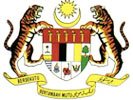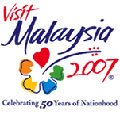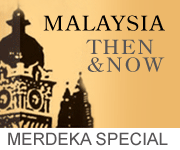Choose one!.
Kuala Lumpur (or KL as it's commonly called), is the capital city of Malaysia. Spanning over 243 square kilometres, KL has first-rate hotels, excellent and varied cuisines, a lively blend of cultures, architectural styles that range from Moorish to Tudor to modern, a generally efficient infrastructure, and some of the lowest prices of any major Asian city.
KL can be described as a cross between Singapore and Bangkok on a smaller scale. It has the efficiency of Singapore and the rough edges of Bangkok, creating its own unique charm. English is widely spoken and the streets tend to be safe due to the heavy police presence in most tourist areas.
Discovering KL is like travelling through a time tunnel. One minute you can be skimming across town on the modern monorail past ultra-modern skyscrapers, and the next minute you are at street level, standing among rows of quaint old shop-houses. Despite its bustling, cosmopolitan style, KL is, at heart, an earthy place, where people sit around the kedai kopi (coffeehouse) and talk about food, religion, and business.
This is all a far cry from the city’s low-key origins. When a huddle of poor tin miners first crowded around the mosquito-ridden banks of the Gombak and Klang rivers in 1857, little could they have imagined that KL would evolve into one of Asia’s most vibrant cities.
To the avid shopper, KL is paradise. From world-renowned designer labels and brands to exquisite made-in-Malaysia items, the highly competitive environment that exists among traders is a blessing in disguise to shoppers. While department stores practice a fixed price policy, bargain hunters can test their skills at smaller retail establishments or at any one of KL's famous night markets. KL will enthral you; it will capture your heart and mind in a way no other city will.
One constant in Kuala Lumpur is the climate. It has consistently warm daytime temperatures, balmy evenings and afternoons that are often punctuated by thunderstorms, usually passing quickly to leave the evenings cool and rain free.
Temperatures range from 21 °C to 33 °C and the average humidity exceeds 82%. Although there is rain throughout the year, March to April and September to November are the wettest months.
The city was founded by miners who, in 1857, discovered tin where the Klang and Gombak rivers formed a broad delta. Those pioneers were a rough, hardy lot, and the city retains some of that early boomtown character. In 150 years Kuala Lumpur has grown from a ‘muddy confluence’ (the meaning of Kuala Lumpur) to a modern, bustling city of well over a million people.
The official founder of the area was the original 'Kapitan China', Yap Ah Loy, who had been appointed by the sultan to bring unruly Chinese fortune-seekers into line. By the 1880's KL was well on its way to becoming a 'real' city and successful miners and merchants began building fine homes along Jalan Ampang and a British resident, Frank Swettenham, drew up the first town-plan for the city. By 1886 the railway was constructed linking KL to Port Klang and the town never looked back.
Nowadays KL is not only the business and commercial capital of Malaysia it is also the political capital and the largest city in the country. With plans afoot to make it one of the most competitive Asian countries by the year 2020, Kuala Lumpur grows year by year, almost day by day and now massive skyscrapers grace the once wild horizon.
Despite all the recent developments the city retains much of its past splendour. Old colonial buildings stand proud, jostling sidewalk space with ultra modern high-rise establishments.
Street vendors and night markets are scattered around the heart of the city making it a vibrant and exciting place for the visitor. Different cultures compete to sell their produce and temples from various religions stand side by side, each with their own unique beauty and heritage.
Labels: General







